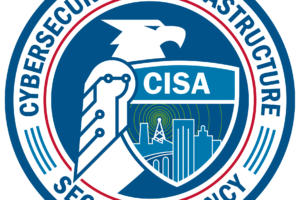
TIEMS team in the FIRE – RES EU project has developed an Opinion Paper on “Improving Interoperability for EU Joint Civil Protection Actions”.
This Opinion Paper aims to initiate discussions to improve interoperability among EU Civil Protection organizations. By leveraging insights from the experience of TIEMS members, previous TIEMS projects, and initial findings from the FIRE-RES project, this presentation highlights the need for a comprehensive approach to enhancing coordination, communication, and collaboration across national borders in Europe.
Interoperability among EU Civil Protection organizations is essential for effective disaster response and resilience. The ability of different national systems to work together seamlessly ensures timely and coordinated efforts during emergencies, ultimately saving lives and resources. While each nation has developed its own protocols and structures, the growing frequency and complexity of cross-border emergencies necessitate a more integrated approach.
The EU Host Nation Support (HNS) guidelines provide a precedent for discussing command and control interoperability. These guidelines have established a framework for receiving and providing assistance during disasters, highlighting the importance of standardized procedures and cooperation among EU member states (UCP Knowledge Network). Similarly, this opinion paper advocates for a framework to enhance interoperability in civil protection, with a focus on command and control, leveraging insights from various EU Projects, TIEMS research and experience, and recent efforts such as FIRE-RES.
Objective: The primary objective of this opinion paper is to emphasize the need for a comprehensive roadmap to enhance command and control interoperability among EU Civil Protection organizations. While not a direct deliverable of the FIRE-RES project, the findings and experiences from FIRE-RES are highly applicable to this initiative and further support the previous research and projects by TIEMS. By identifying key issues and presenting relevant research and project findings, this paper aims to:
• Highlight the importance of interoperability in civil protection.
• Identify the challenges and opportunities related to interoperability.
• Propose the development of a detailed roadmap to address these challenges and leverage opportunities.
A next step would be the creation of a project under the EU framework that tackles interoperability through in-depth analysis and collaborative efforts, much like the development of the HNS guidelines. This approach would focus on the people, systems, and structures surrounding civil protection response, ensuring a robust and coordinated effort across the EU.
Insights from FIRE-RES
b The FIRE-RES project, funded under the European Union’s Horizon 2020 research and innovation program, aims to develop innovative solutions for creating fire-resilient territories across Europe. The project addresses extreme wildfire events (EWEs), which pose significant environmental, economic, and social threats. FIRE-RES integrates research, technology, civil protection, policy, and governance to innovate processes, methods, and tools for effective fire management.
Key Findings: The insights from the FIRE-RES project highlight several critical aspects that are relevant to developing command and control interoperability within EU Civil Protection systems:
• Multi-Actor Collaboration: Effective disaster management requires collaboration among multiple actors across different levels and sectors. FIRE-RES demonstrated the importance of engaging diverse stakeholders in planning and implementing fire management strategies. This involves fostering partnerships between public and private entities, enhancing the role of local communities, and ensuring that all relevant actors are equipped with the necessary knowledge and resources. Translating this to command and control interoperability, it is essential to establish clear communication channels and collaborative frameworks that include all relevant stakeholders in emergency response planning and execution.
• Capacity Building and Knowledge Sharing: One of the significant achievements of FIRE-RES is its emphasis on capacity building and knowledge sharing. By raising awareness and promoting education on wildfire risk prevention, preparedness, and response, the project enhances the overall capacity of involved stakeholders. Applying this to command and control systems, ongoing training programs, workshops, and the development of best practices are crucial for building a common understanding and operational proficiency among different national and regional command centers.
• Human Capital Development: The FIRE-RES training event in Valabre (April 2024) highlighted that, on a human capital level, nations have personnel capable of greater integration into command and control structures but lack the experience and opportunity to do so. For command and control interoperability, it is vital to develop the skills and experiences necessary for personnel to integrate seamlessly into broader, multi-national command frameworks. This includes creating opportunities for joint exercises and shared experiences that build trust and operational coherence.
These insights from the FIRE-RES project underscore the importance of a comprehensive approach to interoperability that includes not just technical solutions, but also organizational, procedural, and community-based strategies. They provide a valuable foundation for developing a roadmap aimed at improving interoperability among EU Civil Protection organizations.
Challenges and Opportunities
Identified Challenges: The FIRE-RES project has uncovered several significant challenges to achieving interoperability among EU Civil Protection organizations. These challenges highlight the complexities and barriers that need to be addressed to enhance cross-border cooperation effectively.
• Communication Barriers: Different communication protocols and languages used by various national civil protection agencies create significant barriers to effective collaboration. These differences can lead to misunderstandings and delays in response efforts during emergencies.
• Coordination Difficulties: Variations in command structures and decision-making processes across countries pose challenges to unified operations. Each country has its own established procedures and hierarchies, which can complicate efforts to coordinate a cohesive response during transnational emergencies.
• Administrative and Procedural Incompatibilities: Diverse administrative practices and procedural norms among EU member states further hinder interoperability. These incompatibilities can result in inefficiencies and slow down the mobilization of resources and personnel across borders, hampering overall command and control integration in the host nation.
Opportunities: Despite these challenges, there are numerous opportunities to enhance interoperability, as demonstrated by the FIRE-RES project and other EU, TIEMS, and research initiatives.
• Standardizing Procedures: Developing common procedures and protocols for emergency response can significantly enhance interoperability, while still appreciating the national structures and legislation. Standardization efforts could include creating unified guidelines for communication, resource allocation, and operational coordination, similar to the EU Host Nation Support (HNS) guidelines. In fact the EU Host Nation Support guidelines provide a good example of development of format of command and control guidelines (UCP Knowledge Network).
• Improving Communication Frameworks: Establishing robust communication frameworks that support multiple languages and protocols can bridge communication gaps. This could involve adopting interoperable communication technologies and platforms that enable real-time information sharing among different agencies (FIRE RES) (FIRE RES) (Research EU).
• Enhancing Collaborative Training Programs: Joint training programs and exercises are crucial for building trust and operational familiarity among different national teams. These programs can simulate cross-border emergency scenarios, but focus on command and control interoperability, allowing agencies to practice and refine their coordination and communication strategies (Research EU) (European Research Executive Agency). For example, the practicing of personnel exchange in command and control systems and simulations to address functional aspects of command and control interoperability.
• Promoting Capacity Building and Partnership Brokerage: Capacity building initiatives, such as training and educational programs, can equip stakeholders with the skills and knowledge needed for effective collaboration. Additionally, fostering partnerships between civil protection organizations with a focus on command and control, enhances overall preparedness and response capabilities.
By addressing these challenges and leveraging the opportunities identified, EU Civil Protection organizations can significantly improve their command and control interoperability at a functional level in personnel and systems. This will not only enhance their ability to respond to cross-border emergencies but also strengthen overall disaster resilience across the region, while not forcing investment in equipment, new technologies, or infrastructure.
Elements of Command and Control Interoperability
Overview: Command and Control Interoperability in the context of EU Civil Protection organizations encompasses various potential elements that enable different national systems to work together effectively during emergencies. These characteristics are well-documented globally and offer a foundation for developing interoperability frameworks tailored to the EU’s unique architecture and needs.
• Span of Control: Effective management and coordination of resources during emergencies require a clear span of control. This principle ensures that each supervisor oversees a manageable number of subordinates, facilitating efficient decision-making and communication. Adopting a standardized span of control can streamline operations and enhance response capabilities during large-scale emergencies.
• Unified Command: A unified command structure is essential for coordinated decision-making during emergencies. This structure allows multiple agencies to operate under a single, cohesive command, ensuring that all efforts are aligned, and resources are utilized efficiently. Unified command helps eliminate confusion and duplication of efforts, which is particularly important in cross-border emergency scenarios.
• Joint Training and Exercises: Regular, collaborative training programs and exercises are crucial for building trust and operational familiarity among different national teams. These activities allow agencies to practice and refine their coordination and communication strategies in simulated emergency scenarios. Joint training helps identify and address potential interoperability issues before they arise in real-world situations.
• Common Terminology and Procedures: Standardized language and procedures ensure clarity and consistency in communication and operations. By adopting common terminology and standardized procedures, EU Civil Protection agencies can reduce misunderstandings and enhance their ability to work together seamlessly. This element is particularly important for ensuring that all agencies understand each other’s roles, responsibilities, and actions during emergencies.
• Resource Sharing and Mutual Aid: Agreements and mechanisms for sharing resources across borders are vital for effective emergency response. These arrangements allow countries to provide and receive assistance quickly, ensuring that critical resources are available where and when they are needed. Resource sharing and mutual aid agreements enhance the collective capacity of EU Civil Protection organizations to manage large-scale emergencies.
Best Practice Example:
• Joint Drills and Integrated Response Scenarios: The FIRE-RES project has highlighted the importance of joint drills and integrated response scenarios. These activities allow agencies to test and improve their interoperability in realistic settings, identifying strengths and areas for improvement. In terms of command-and-control interoperability, this would be an ideal point to integrate personnel in functional areas in order to create interoperability at the individual level within a command and control structure. Exemplified by the training event in Valabre, France where integrated response scenarios integrated personal from different civil protection structures. The training event provided a platform for the exchange of personnel between civil protection system, fostering realistic learning and collaboration against the backdrop of an integrated response scenario.
Tailoring to the EU Architecture: It is important to note that while these elements and best practices are globally recognized, it is crucial to define and adapt them to fit the specific needs and architecture of the EU. The diversity of administrative structures, legal frameworks, and operational procedures across EU member states necessitates a tailored approach to interoperability. Developing a detailed roadmap and project focused on these tailored solutions will ensure that interoperability efforts are practical, effective, and sustainable within the EU context.
By understanding and implementing these potential elements, and customizing them to the EU’s unique context, EU Civil Protection organizations can significantly enhance their interoperability, ensuring a more coordinated and effective response to emergencies across national borders.
Potential Framework for Harmonization and Interoperability
Strategic Approach: To enhance command and control interoperability across EU Civil Protection systems, a strategic and collaborative approach is essential. Drawing lessons from existing initiatives like the EU Host Nation Support (HNS) guidelines, there is significant potential to develop a framework that aligns the diverse structures and processes of EU member states, enhancing cooperation and coordination.
Role of Interoperability: Interoperability is crucial for effective disaster response, enabling different national systems to work together seamlessly. It enhances the capacity to respond to cross-border emergencies, reduces redundancy, and maximizes resource use. A coordinated response ensures timely and efficient actions, ultimately saving lives and minimizing damage. Interoperability is being addressed through various initiatives, such as FIRE-RES, however command and control interoperability remains extant.
Pathways for Developing a Framework: Several pathways can be considered for developing a potential framework for interoperability:
• Command and Control Guidelines (Best Practices): Mirroring the EU HNS Guidelines effort, there is a need to develop and adopt a set of “best practices” or guidelines for command and control during response that all EU member states can follow. This includes understanding functional areas, aspects of incident management, resource allocation processes, and operational coordination mechanisms. Such standardization would facilitate smoother cooperation during cross-border emergencies, and specifically drive interoperability at depth to the personnel level.
• Interoperable Communication Systems: Establishing interoperable communication systems is vital for real-time information sharing among different agencies. This could involve adopting compatible technologies and platforms that support multiple languages and communication protocols, ensuring that all parties remain informed and coordinated during an emergency.
• Joint Training and Exercises: Implementing joint training programs and exercises that involve multiple national teams is crucial. These activities help build trust, operational familiarity, and a better understanding of each other’s capabilities and procedures. Regular exercises will also identify potential interoperability issues and allow for the development of solutions in a controlled environment.
• Legislative and Policy Alignment: Where applicable, harmonizing laws and policies related to civil protection and emergency management across the EU will provide a consistent legal framework that supports standardized procedures and facilitates cross-border cooperation. Legislative alignment ensures that all member states have compatible policies for resource sharing, mutual aid, and operational coordination.
Example: The development of the EU HNS guidelines serves as an exemplary model for the potential to create a framework for interoperability. Just as the HNS guidelines standardized procedures for receiving and providing assistance during disasters, a similar framework could outline standardized procedures and policies to enhance coordination and cooperation in civil protection efforts.
By pursuing these pathways and aligning them with the specific needs and contexts of EU member states, there is substantial potential to develop a framework that enables more effective and coordinated disaster response efforts. This strategic approach will ensure that EU Civil Protection organizations can work together seamlessly, enhancing resilience and reducing the impact of emergencies across the region.
What’s Next? Develop a Conceptual Way Ahead (Initial Roadmap)
To begin the conversation about developing command and control operability, an initial roadmap can be developed that can frame the problem and way ahead. However, a full comprehensive roadmap is required to understand the full complexity of the interoperability issue. A full and comprehensive roadmap requires funding and personnel to develop properly, and EU endorsement to provide the appropriate authority. A comprehensive roadmap will serve as a strategic guide, outlining the necessary steps, milestones, and resources required to create a framework that fosters coordination, communication, and collaboration across national borders.
Developing a detailed roadmap is essential for several reasons. First, a roadmap clarifies the role of command and control interoperability, creating a unified strategy that addresses common challenges and goals. By developing a roadmap towards command and control interoperability, there are opportunities to reduce redundancy and identify commonality amongst other EU projects. Second, a roadmap maximizes the use of available resources by identifying and prioritizing critical areas for development. This helps to ensure that funds and efforts are directed towards the most impactful initiatives, enhancing the overall effectiveness of a project to develop command and control interoperability.
A full roadmap also establishes clear milestones and performance indicators to track progress and ensure accountability throughout the implementation process. Clear milestones provide a timeline for achieving specific goals, making it easier to measure success and make adjustments as needed. Additionally, engaging all relevant stakeholders in the development and implementation process ensures broad support and participation. By involving stakeholders from the beginning, the roadmap can reflect a wide range of perspectives and expertise, enhancing its relevance and effectiveness.
A comprehensive roadmap would include several critical components. It would begin with a comprehensive assessment of current interoperability capabilities, aligning with international standards and best practices. This initial phase would involve engaging stakeholders through consultations and workshops to gather input and ensure alignment with national priorities. By understanding the current state and desired outcomes, the roadmap can be tailored to address specific needs and challenges to achieve command and control interoperability.
By committing to the development and implementation of this roadmap, EU Civil Protection organizations can ensure they are better equipped to respond to emergencies in a coordinated and effective manner. This strategic approach will lead to the creation of a robust and resilient civil protection framework that can effectively address the complexities of modern disaster response. The roadmap will provide a shared vision and actionable plan, fostering collaboration and enhancing the collective capacity to manage cross-border emergencies.
After the Roadmap
The next phase would involve developing non-binding guidelines that outline standardized procedures and protocols for interoperability. These guidelines would be customized to address the specific needs and contexts of EU member states, ensuring relevance and applicability. Additionally, training programs would be developed to support the implementation of these guidelines, providing civil protection agencies with the knowledge and skills needed to effectively collaborate across borders and effectively integrate into other command and control structures.
The development of the EU Host Nation Support (HNS) guidelines serves as an exemplary model for creating a framework for interoperability. Just as the HNS guidelines standardized procedures for receiving and providing assistance during disasters, an interoperability roadmap would outline standardized procedures and policies to enhance coordination and cooperation in civil protection efforts.
Pilot projects would be implemented to test the proposed solutions and frameworks in real-world scenarios. These pilot projects would provide valuable insights into the effectiveness of the guidelines and training programs, allowing for data collection and feedback to refine and improve the approach. By evaluating the success of these pilots, adjustments can be made to ensure the framework is robust and effective.
Following the pilot phase, the interoperability framework would be rolled out across all EU member states. This full-scale implementation would involve providing ongoing support and resources to facilitate adoption and ensure success. A feedback mechanism would be established to gather input from the field, allowing for continuous improvement of the framework based on real-world experiences.
Ensuring the long-term commitment to interoperability would require securing funding and resources to support ongoing efforts. Integrating the interoperability framework with other relevant EU initiatives and international organizations would ensure alignment and synergy, enhancing the overall impact of the efforts.
Conclusion
Interoperability among EU Civil Protection organizations is not just a desirable goal but an essential requirement for effective disaster response and resilience. As cross-border emergencies become increasingly frequent and complex, the ability of different national systems to work together seamlessly is crucial. The insights from TIEMS and findings from the FIRE-RES project highlight significant challenges and opportunities in achieving command and control interoperability, emphasizing the need for a coordinated and strategic approach.
The proposed development of a comprehensive roadmap represents a vital step towards enhancing interoperability. This roadmap will serve as a strategic guide, outlining the necessary steps, milestones, and resources required to foster coordination, communication, and collaboration across national borders. By aligning strategies, maximizing resources, establishing clear milestones, and engaging stakeholders, the roadmap will provide a structured and effective approach to achieving interoperability.
Key components of the roadmap will include a comprehensive assessment of current capabilities, the development of non-binding guidelines and customized training programs, the implementation and evaluation of pilot projects, and the full-scale rollout of the interoperability framework. Ensuring long-term commitment and integrating the framework with other relevant initiatives will be crucial for sustained success.
The development of the EU Host Nation Support (HNS) guidelines serves as an exemplary model for creating a framework for interoperability. Just as the HNS guidelines standardized procedures for receiving and providing assistance during disasters, a command and control interoperability roadmap would outline standardized procedures and policies to enhance coordination and cooperation in civil protection effort.
By committing to the development and implementation of this roadmap, EU Civil Protection organizations can significantly enhance their ability to respond to emergencies in a coordinated and effective manner. This strategic approach will lead to the creation of a robust and resilient civil protection framework that can effectively address the complexities of modern disaster response. The roadmap will provide a shared vision and actionable plan, fostering collaboration and enhancing the collective capacity to manage cross-border emergencies.
In conclusion, the journey towards command and control interoperability requires a collective effort, informed by research, guided by strategic planning, and sustained by continuous improvement. By initiating this discussion and committing to the development of a comprehensive roadmap, we can pave the way for a more resilient and cooperative future for EU Civil Protection organizations.













